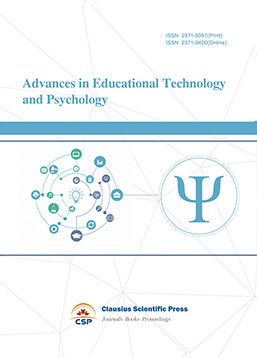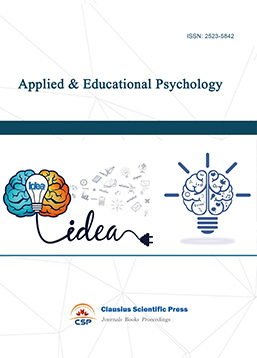Application of Thinking Visualization in English Reading Teaching in Senior High School from the Perspective of Activity-based Approach to English Learning
DOI: 10.23977/curtm.2025.080120 | Downloads: 80 | Views: 919
Author(s)
Jia You 1
Affiliation(s)
1 School of Foreign Studies, Anhui Normal University, Wuhu, 241000, Anhui, China
Corresponding Author
Jia YouABSTRACT
Reading is an activity of interaction between language and thinking, and in the field of English teaching, cultivating students' thinking ability has become an important research topic. Thinking visualization means that in the learning process, students can show the inner thinking structure and thinking path in a visual way. The use of thinking visualization tools in high school English teaching helps students quickly build a systematic and complete knowledge structure, which has a significant impact on improving learning efficiency and shaping thinking quality. Based on the activity-based approach to English learning, this paper analyzes the innovative path of integrating thinking visualization into high school English reading teaching, aiming at exploring effective strategies to promote the synergistic development of students' comprehensive language ability and thinking ability.
KEYWORDS
Thinking visualization; activity-based approach to English learning; senior high school; EnglishCITE THIS PAPER
Jia You, Application of Thinking Visualization in English Reading Teaching in Senior High School from the Perspective of Activity-based Approach to English Learning. Curriculum and Teaching Methodology (2025) Vol. 8: 139-146. DOI: http://dx.doi.org/10.23977/curtm.2025.080120.
REFERENCES
[1] Ministry of Education of the People's Republic of China. General Senior High School English Curriculum Standards (2017 edition, 2020 revision) [M]. Beijing: People's Education Press, 2020.
[2] Zhao Guoqing, Huang Ronghuai, Lu Zhijian. Theory and Methods of Knowledge Visualization[J]. Open Education Research, 2005, (01):23-27.
[3] Liu Chuyuan, Lin Shuyang . Exploring the integration of thought visualization and deep learning[J]. China Information Technology Education, 2019,(21):5-8.
[4] Zhao Guoqing, Yang Xuanyang, Xiong Yawen. On the Principles and Focus Points of Teaching Application of Thinking Visualization Tools[J]. Research on Electrochemical Education, 2019, 40(9):59-66, 82.
[5] Zhang Weizhong, Tang Huirong. Five principles of visualization teaching content design[J]. Research on Electrochemical Education, 2010, (10):99-102.
[6] Xing Wenjun. The Practice of Using Thinking Maps to Cultivate Students' Core Competencies in English Discipline in Reading Teaching[J]. Foreign Language Teaching in Primary and Secondary Schools (Middle School Part), 2019, 42(4):23-27.
[7] Zhang Haiyan, Tang Hongyan, Lu Xiangli, et al. A tutorial on the design and practice of secondary English reading teaching [M]. Beijing: Renmin University of China Press, 2021: 74.
[8]Zheng Zexiu. The application of thinking visualization tools in high school English reading and writing [J]. School English, 2024, (16): 51-53.
[9] Si Chengxiang. Application of graphs and tables in data analysis [J]. Secondary Mathematics, 2024, (17):63-64.
[10] Nie Xinlin. The design of English reading teaching activities under the direction of thinking visualization[J]. English Teaching and Research in Primary and Secondary Schools, 2023(3):67-71.
[11] Cheng Xiaotang. The role of English learning in developing students' thinking ability[J]. Curriculum• Teaching materials•Teaching Methods, 2015, 35(6):73-79+127.
| Downloads: | 38943 |
|---|---|
| Visits: | 1679875 |

 Download as PDF
Download as PDF



